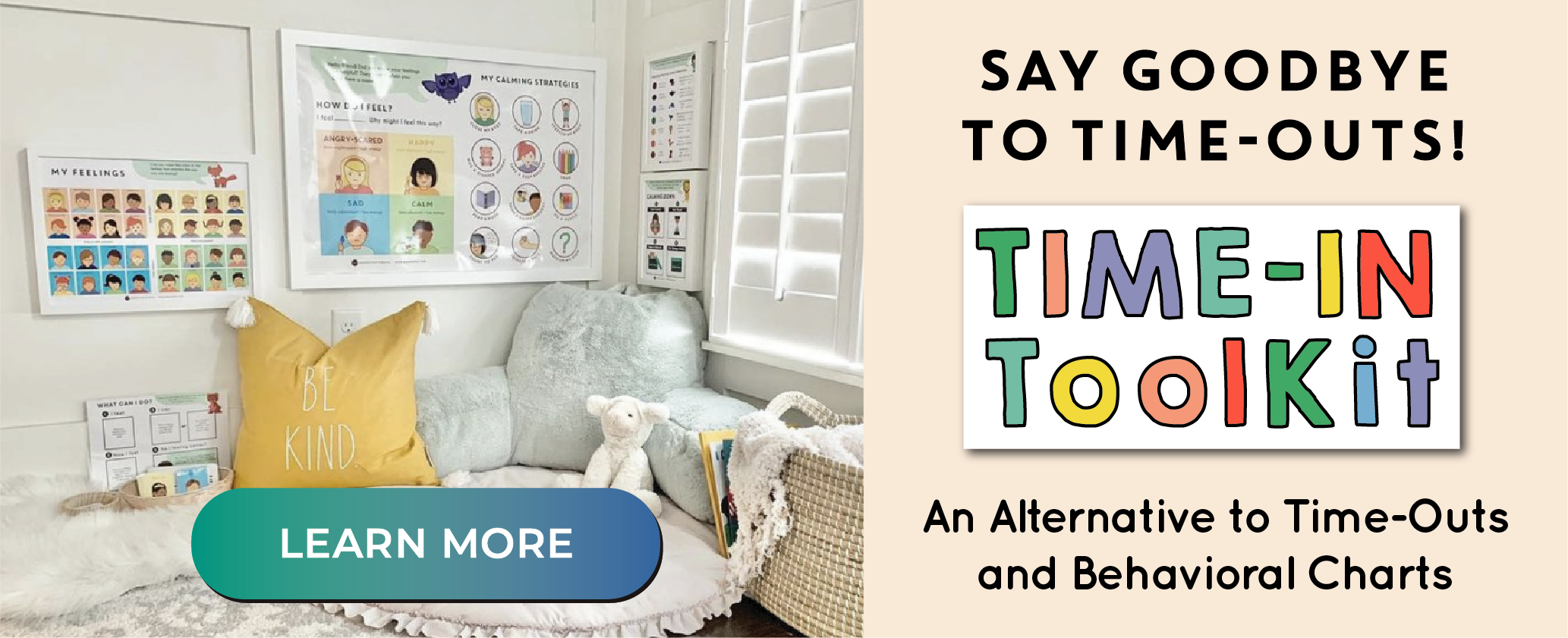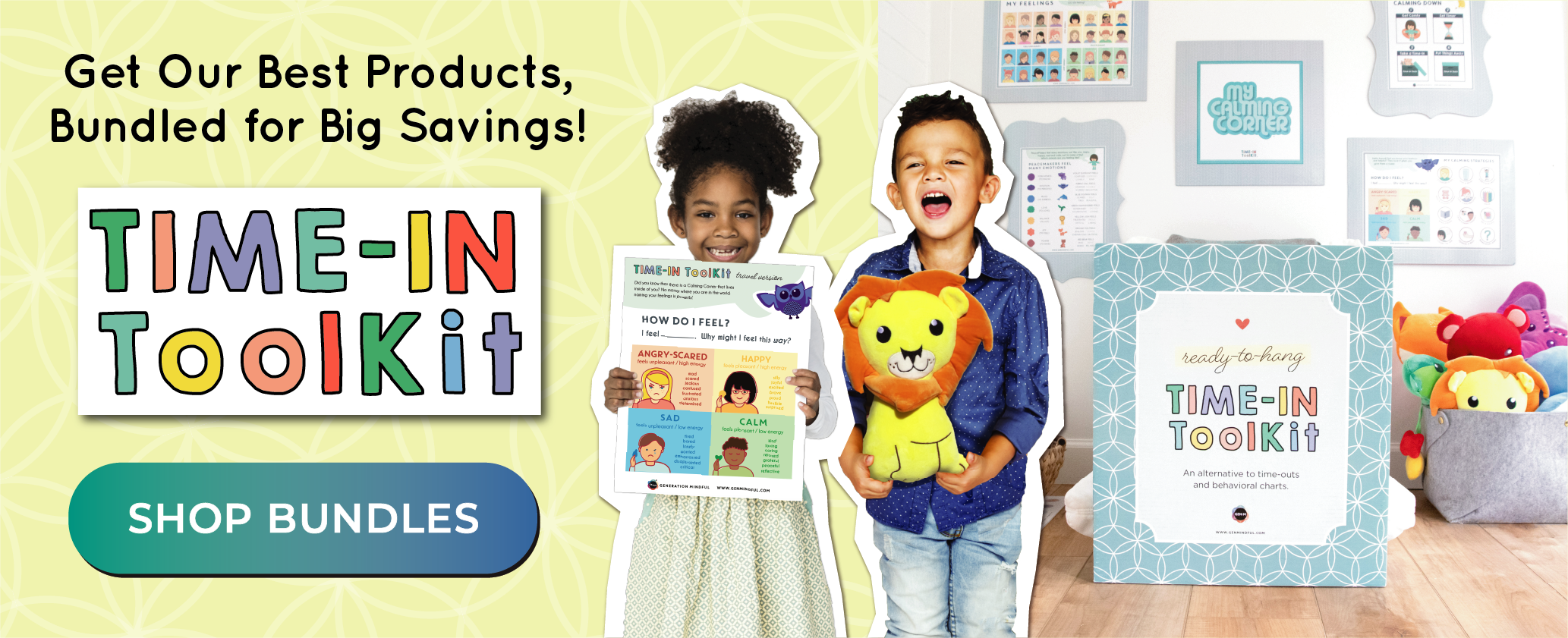I remember from an early age that being mad got me sent to my room. Nose to the corner, trying to “think about what I had done” without even fully understanding what it was that I felt, let alone why I did what I did.
I’m not sure I ever really figured that out, but what I did learn fairly quickly was that being mad, frustrated, or even sad was not safe. My big feelings that led to big behaviors got me a big dose of all-by-myself and, over time, the belief that I was a bad kid.
I adapted the way our bodies are designed to adapt, namely, for survival.
The parts of me that got love and attention? I tended to these parts of me with everything I had, growing them as fast as I could. But the parts of me that got me all-by-myself? I suppressed, hid, denied, shamed, and buried these parts of myself.
Fast forward thirty years, and I am now face-to-face with my child, throwing his big emotions my way because he feels mad about the cookie I wouldn’t give him. My alarm system is buzzing, and I want to shut his emotions down because everything inside of me is yelling, “Retreat, retreat!!! This isn’t safe!”
But here’s the kooky thing.
As much as the inner child parts of me want to run and hide, the adult parts of me want to stay and be with my son to give him what I needed when I was a child and felt mad about not having a cookie before dinner.
In raising my son and reparenting myself at the very same time, what I'm learning is that every single emotion I feel carries with it useful, valid, dare I say "powerful" information. Even the dark, scary, unpleasant emotions I worked so hard to hide for most of my formative years.
I don’t want my son to feel like he has to hide parts of himself from himself, me, or the world, and I don’t want him to feel like he is bad kid when he is having a hard time.
Soak in this next part:
Raising emotionally healthy kids is not about teaching our children not to be mad, sad, or frustrated. It’s about teaching them how to be mad, sad, and frustrated.
Rather than teaching children to suppress or bottle up their emotions, we can empower them with the skills they need to move through their feelings in healthy ways.
This is what I am learning - and it can be a tricky thing for those of us who never felt safe sharing our feelings when we were growing up. When I first started, I felt like I was tiptoeing around landmines, scared that doing or saying the “wrong” thing would lead to an explosion … him, me, or both.
The process of wiring feelings and regulation circuits is a daily lived experience, not a one-time checklist or perfect script. We are going to slip up. Our triggers are going to be bigger than us sometimes, and we are going to fall into old patterns.
But this parenting gig is an endurance race, not a sprint, and we don’t need to do it perfectly or by ourselves.
I know what you’re thinking … Where is that list for teaching kids HOW to be mad?
I am getting there.
But before I share it, please know this. The shift you are looking for in your child will not happen overnight. The part of the brain wired for regulation, problem-solving, impulse control, and all those other big skills associated with navigating life isn’t fully developed until our twenties! This means that our children learn through the love and relationship experiences we give them during the easy, fun moments of life and the tricky, unpleasant moments as well.
Teaching children healthy life skills happens inside a series of small daily rituals and little moments of connection that send them the following message without even using a word: "Hey, I see you having this big, scary emotion. Your emotions are not contagious. I can handle your feelings. I am here, and we will ride this out together."
And with that, here are five steps for teaching a child how to be mad.
5 Steps For Teaching A Child How To Be Mad
1. Notice And Validate
When my child’s feelings are turned up to an 11 out of 10, my first stop is validating his experience. This helps children feel seen and heard, which increases feelings of safety and connection and helps them move from the reactive parts of the brain into the areas responsible for emotional regulation.
To validate my child when he is feeling mad, I may say something like:
- - It seems like this doesn’t feel good to you.
- - It looks like you didn’t want that to happen.
- - You really wanted that cookie, huh? I know how that feels.
- - You are feeling super mad (frustrated, sad, etc) right now. I get it.
- - This feels hard. You are safe, and I am here.
2. Set Boundaries
It is important to validate all emotions and to set loving limits around some behaviors, especially the ones that are destructive or harmful to your child or others. When you set firm, clear, and respectful boundaries, it creates predictability, structure, and safety, affirming to your child that while all emotions are allowed, there are loving limits around how we express them.
I may say something like:
- - It’s okay to be mad. It’s not okay to hit.
- - I know you don’t want to hurt me. I will keep us safe.
- - I won’t let you throw things at your sister. Let’s find a new way.
- - My job is to keep everyone safe, and right now, that looks like ...
- helping you to your room so we can work through this together.
- stepping behind this cushion to keep my body protected.
- putting this toy away until we calm our bodies.
3. Redirect
Each child has their own meltdown language - the nervous system’s way of releasing emotional tension from the body.
Some kids will withdraw and tell you to go away, while others might hit, kick, scream, or destroy things. Instead of making these "needs" wrong, we can redirect the behaviors, helping our kids channel their feelings in healthy ways.
This table illustrates some redirection ideas:
| Behavior to Adjust | Redirection Tactic |
| BITING | Chewelry, wooden toys, frozen carrots |
| HITTING | A deep hug, crash pad, wall push-ups, weighted blanket, bear walks |
| SPITTING | Spitting games into the toilet, tub, or cup (use cereal as a spitting target) |
| DESTRUCTION | Tear paper, pop bubble wrap with their feet, snap dry noodles |
The point is to notice your child’s meltdown patterns and find new outlets for them. Introduce these strategies and practice them during regulated moments so that they can better access them during dysregulated experiences.
4. Affirm Your Love
Children need to know that while they are feeling bad, they are not bad.
I may say something like:
- - You’re a good kid having a hard time, and I’m here for you.
- - I can handle your big emotions. It is safe to let them out.
- - This won’t last forever, and I will stay with you while it’s hard.
There are also times when saying less is more, especially when our kids are deeply in their reactive brainstem. During these moments, I communicate safety with my body by getting low or creating a safe distance, letting them know I see them and am here with them.
5. Process What Happened
Once my child is through the heat of the moment and is receptive, I revisit what happened via a Time-In. This may happen directly after the meltdown or maybe later in the day or before bed.
I know, I know … Why in the world would I want to rehash a hard moment with my child? This is how they will process and integrate their lived experience and create circuits from their lower survival brain to their higher learning brain. As the circuits are formed and reinforced, it becomes easier for our children to access them when they need them.
During a Time-In, I may focus on:
- - What happened
- - How they felt
- - How the other person involved felt
- - How I felt
- - Strategies they can use next time
- - Repair and make amends
To help us move through these steps, I use our Time-In posters and the "What Can I Do?" activity mat that came in our kit. This guides us step by step when I forget what to say, and my child actually likes using it.
We also use our SnuggleBuddies plush every night at bedtime. I like that we have a ritual to talk about our feelings when we are all snuggled up, getting ready to read together and not just when we are knee deep in chaos.
I was not taught this as a child ----> but anger is an important human emotion.
When it is suppressed, our kids grow into adults who don’t know how to feel (or they are scared to feel) so they suppress their emotions; oR worse yet, when they get upset, they explode.
When we teach our young kids how to notice all the many ways they feel using time-ins to practice this skill on a regular basis, they grow into adults who know how to name their feelings, respect themselves (and others!), and manage their emotions.
At age 34, I am learning that every emotion is part of the human experience, and I have my children and the many time-ins we take together to thank for this.
My emotions are not right or wrong... they are data about my inner world. My wants, my needs, and even my fears. And they are sacred.

























